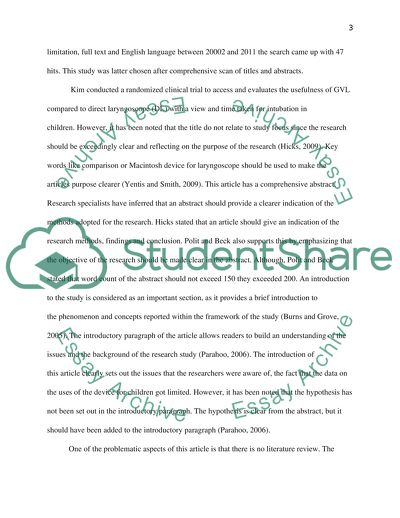Cite this document
(GlideScope Video Laryngoscope Coursework Example | Topics and Well Written Essays - 1750 words, n.d.)
GlideScope Video Laryngoscope Coursework Example | Topics and Well Written Essays - 1750 words. https://studentshare.org/health-sciences-medicine/1773535-reasearch-for-and-critical-evaluation-of-an-article-on-the-glidescope-video-laryngoscope-related-to-a-randomized-clinical-trial-on-203-pediatric-patients
GlideScope Video Laryngoscope Coursework Example | Topics and Well Written Essays - 1750 words. https://studentshare.org/health-sciences-medicine/1773535-reasearch-for-and-critical-evaluation-of-an-article-on-the-glidescope-video-laryngoscope-related-to-a-randomized-clinical-trial-on-203-pediatric-patients
(GlideScope Video Laryngoscope Coursework Example | Topics and Well Written Essays - 1750 Words)
GlideScope Video Laryngoscope Coursework Example | Topics and Well Written Essays - 1750 Words. https://studentshare.org/health-sciences-medicine/1773535-reasearch-for-and-critical-evaluation-of-an-article-on-the-glidescope-video-laryngoscope-related-to-a-randomized-clinical-trial-on-203-pediatric-patients.
GlideScope Video Laryngoscope Coursework Example | Topics and Well Written Essays - 1750 Words. https://studentshare.org/health-sciences-medicine/1773535-reasearch-for-and-critical-evaluation-of-an-article-on-the-glidescope-video-laryngoscope-related-to-a-randomized-clinical-trial-on-203-pediatric-patients.
“GlideScope Video Laryngoscope Coursework Example | Topics and Well Written Essays - 1750 Words”. https://studentshare.org/health-sciences-medicine/1773535-reasearch-for-and-critical-evaluation-of-an-article-on-the-glidescope-video-laryngoscope-related-to-a-randomized-clinical-trial-on-203-pediatric-patients.


